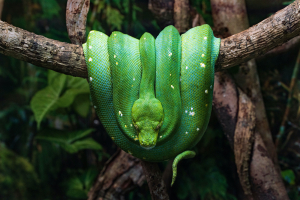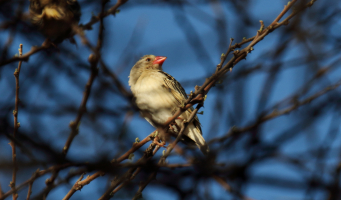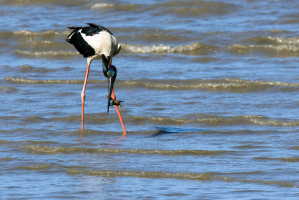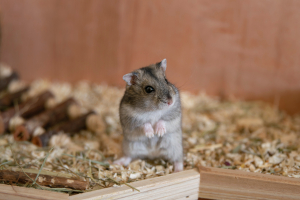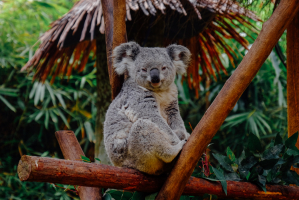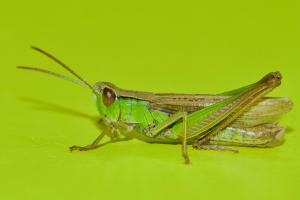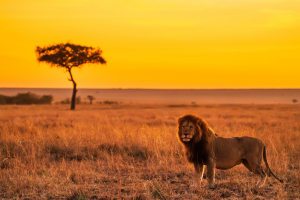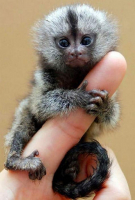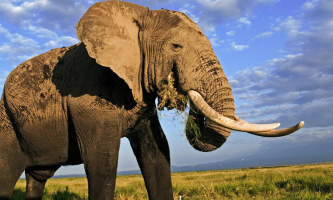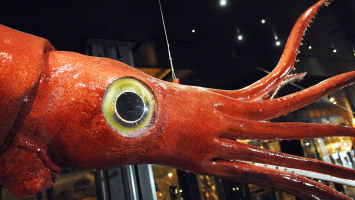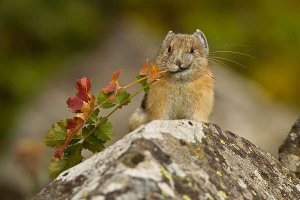Top 15 Common Animals That Start With "Z"
While the animal kingdom boasts a diverse array of species from A to Z, finding representatives for some letters, like Z, can be a bit more challenging. ... read more...However, there are indeed a handful of creatures that bear names beginning with this unique letter. In this article, Toplist delves into the realm of zoology to uncover a few common animals that start with "Z."
-
Zebras, charismatic members of the Equidae family, are iconic representatives of the animal kingdom that fall under the category of common animals beginning with the letter “Z.” These distinctive creatures are primarily found in the expansive grasslands and savannas of Africa, where their black and white striped coats make them stand out against the backdrop of the natural landscape.
The most striking feature of zebras is, undoubtedly, their unique coat pattern. The alternating black and white stripes that adorn their bodies serve both functional and evolutionary purposes. One prevailing theory is that the stripes act as a form of visual deception, confusing predators and making it difficult for them to single out individual zebras from a herd. This adaptive camouflage is particularly advantageous in the wild, where survival often hinges on the ability to evade predators such as lions and hyenas.
Zebras are known for their social nature, forming tight-knit groups known as herds. These herds provide not only companionship but also a crucial defense mechanism against predators. The coordinated movements and vigilant behavior within the group enhance the collective ability to detect and respond to potential threats. Within the social structure of a zebra herd, bonds between individuals are strong, fostering a sense of community that contributes to the overall well-being of the group.
In terms of diet, zebras are herbivores with a preference for grass. Their elongated faces and adept, mobile upper lips allow them to graze on grass with precision. This herbivorous diet is complemented by a digestive system adapted to efficiently process the fibrous plant material found in their primary food source. By playing a role in controlling grass growth, zebras contribute to the ecological balance of their habitats.
Communication is a vital aspect of zebra behavior, and these animals employ a range of vocalizations to convey messages within the herd. Barks, brays, and other vocal signals serve to coordinate movements, warn of potential dangers, and maintain social bonds. Such communication skills are crucial for survival in the dynamic and often challenging environments they inhabit.

unsplash.com Video by Nat Geo WILD -
The zonkey, a unique and charming creature, is a hybrid born from the crossbreeding of a zebra and a donkey. While not as common as zebras or donkeys individually, the zonkey adds an interesting twist to the list of common animals starting with the letter "Z."
Zonkeys inherit features from both parent species, resulting in a fascinating combination of characteristics. Their appearance typically showcases a blend of the zebra's distinct black and white stripes and the more subdued coloring of a donkey. This creates a visually striking animal that stands out among its parent species.
One notable aspect of zonkeys is their size, which often falls between that of a zebra and a donkey. Their bodies may reflect the sturdy build of a donkey, while the legs display the characteristic striping reminiscent of zebras. This mix of physical traits contributes to the zonkey's appeal and makes them intriguing creatures to observe.
In terms of behavior, zonkeys can display a range of traits inherited from both parent species. They may share the social nature of donkeys and the alertness often seen in zebras. This combination results in a hybrid with a unique set of instincts and behaviors that reflect their diverse ancestry.
The breeding of zonkeys is not a common occurrence in the wild, as zebras and donkeys inhabit different regions and have distinct social structures. Most zonkeys are born in captivity, where intentional or accidental crossbreeding may occur. Despite their rarity, zonkeys have gained attention and popularity due to their distinctive appearance and the curiosity surrounding hybrid animals.
While zonkeys are intriguing, they can face challenges related to their hybrid nature. In some cases, they may experience health issues or difficulties fitting into the social dynamics of either parent species. This highlights the importance of responsible breeding practices and the ethical treatment of hybrid animals in captivity.
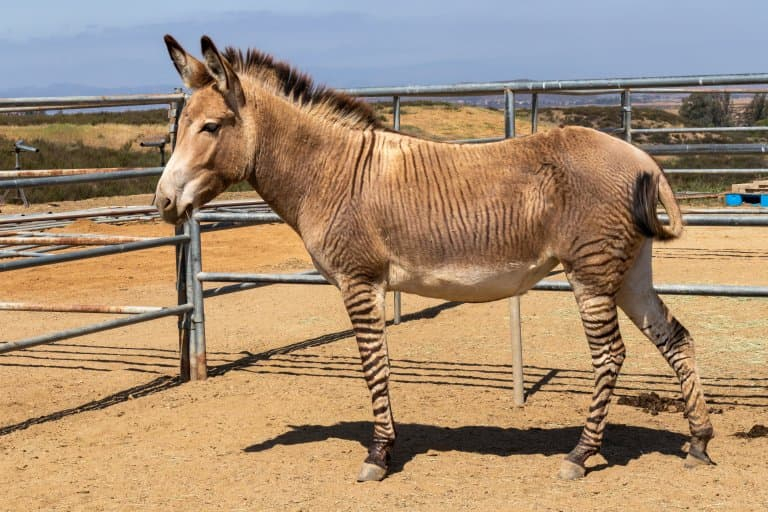
factanimal.com Video by Love Nature -
The Zebra Shark, an intriguing marine species, stands out as one of the common animals beginning with the letter “Z.” Despite its name, the zebra shark is not a striped creature like its terrestrial namesake. Instead, it boasts a distinctive appearance characterized by a unique pattern of spots that resemble a leopard more than a zebra.
Scientifically known as Stegostoma fasciatum, the zebra shark is a member of the carpet shark family and is primarily found in the Indo-Pacific region. Unlike other sharks, the zebra shark has a slender body with a long tail and can reach lengths of up to 8 feet. The most captivating feature of this species is its striking pattern of dark spots against a light background, creating a visual spectacle that sets it apart from other sharks.
One notable characteristic of zebra sharks is their unique life cycle. These sharks are oviparous, meaning that instead of giving birth to live young, they lay eggs. The egg cases, often referred to as “mermaid’s purses,” provide a protective environment for the developing embryos. This distinctive reproductive strategy contributes to the zebra shark’s overall uniqueness within the shark family.
Zebra sharks are predominantly nocturnal hunters, meaning they are most active during the night. Their diet consists of various marine creatures, including small fish, crustaceans, and mollusks. They use their powerful jaws and sharp teeth to catch and consume prey, contributing to the delicate balance of marine ecosystems.
Despite their impressive appearance, zebra sharks are generally considered docile and pose little threat to humans. They are not known to display aggressive behavior unless provoked, making them a favorite among divers and snorkelers who have the opportunity to observe these magnificent creatures in their natural habitat.
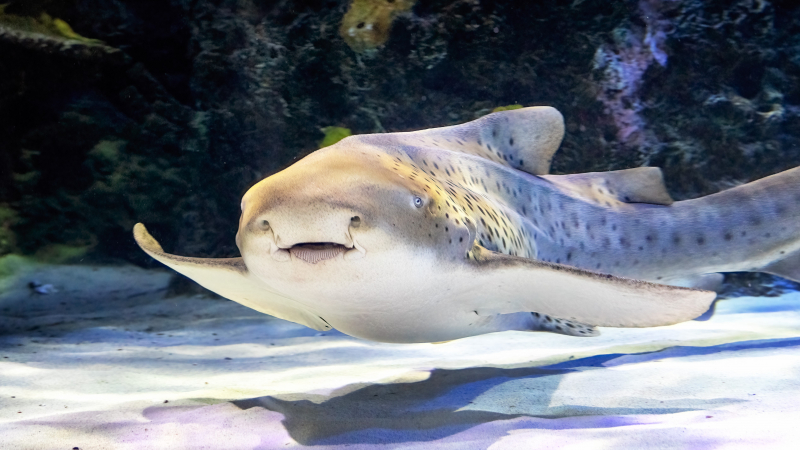
virginiaaquarium.com Video by BlueWorldTV -
The Zebra Cobra, scientifically known as Naja nigricincta, is a serpent that adds a captivating twist to the list of common animals beginning with the letter “Z.” This venomous snake, native to parts of Africa, particularly in the central and western regions, stands out for its distinctive appearance and potent venom.
Named for the bold black and white stripes that run along its body, the Zebra Cobra exhibits a striking pattern reminiscent of its terrestrial namesake, the zebra. These contrasting colors serve as a warning to potential predators, signaling the snake’s venomous nature. Typically, the snake’s body is primarily black with vivid white bands, creating a visually arresting display in its natural habitat.
Measuring around 4 to 5 feet in length on average, the Zebra Cobra is a relatively small species of cobra. Despite its size, it possesses potent venom that can cause severe harm or even death. Like other cobras, it can raise its body off the ground and spread a distinctive hood when threatened, amplifying its intimidating appearance.
The Zebra Cobra is a nocturnal hunter, actively seeking prey during the night. Its diet mainly consists of small mammals, amphibians, and other reptiles. The snake relies on its keen sense of smell to locate prey, and once it captures its target, it delivers a quick and potent venomous bite.
Encounters between Zebra Cobras and humans can lead to dangerous situations due to their venomous nature. However, these snakes are generally shy and will often avoid confrontation. Despite their potential danger, they play a crucial role in controlling rodent populations, contributing to the delicate balance of ecosystems.
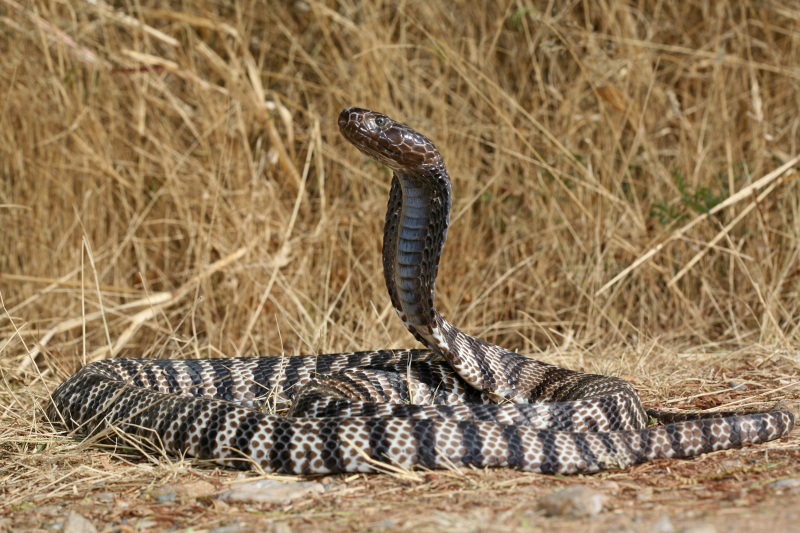
ksat.com Video by Made in the Wild -
Zebra Mussels, small but impactful aquatic creatures, earn their place among common animals starting with the letter "Z." Native to freshwater lakes and rivers in Eastern Europe, these invasive mollusks have spread globally, becoming a significant environmental concern due to their prolific nature and negative impact on ecosystems.
The name "Zebra Mussel" stems from the characteristic dark and light stripes on their shells, resembling the pattern of a zebra. Despite their visually appealing appearance, their introduction into non-native environments has led to a range of ecological issues. Zebra Mussels are efficient filter feeders, consuming plankton and other particles from the water, but their rapid proliferation can disrupt the balance of native ecosystems.
Introduced unintentionally through ballast water from ships, Zebra Mussels have successfully colonized various water bodies around the world. Their ability to reproduce rapidly, with each female capable of producing hundreds of thousands of eggs per year, has contributed to their widespread presence. This prolific reproduction, while impressive in its biological sense, poses a threat to native species by outcompeting them for resources.
One of the significant environmental concerns associated with Zebra Mussels is their impact on water quality. As filter feeders, they can clear large volumes of water, potentially leading to increased sunlight penetration. While this might sound beneficial, it can trigger harmful algal blooms and disrupt the natural balance of underwater ecosystems, affecting both plant and animal life.
The attachment mechanism of Zebra Mussels exacerbates their impact. Using byssal threads, these mollusks attach themselves to hard surfaces such as rocks, docks, and even native mussel shells. This attachment can lead to clogged pipes and infrastructure damage, causing economic challenges for industries relying on water systems.
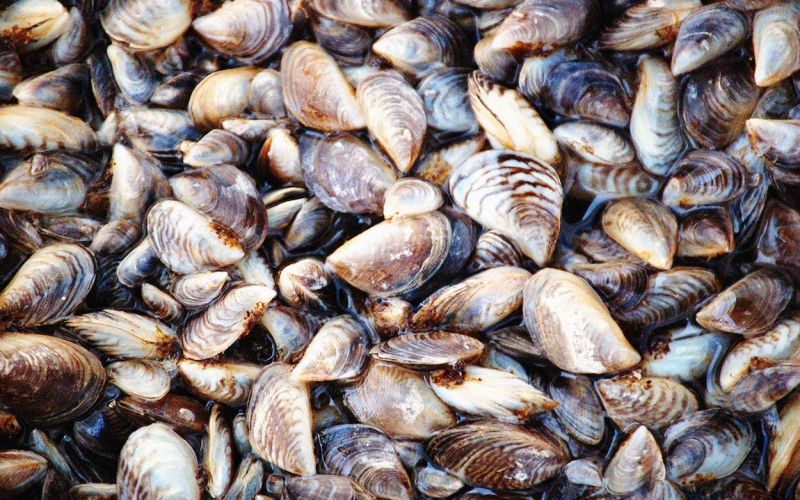
texasmonthly.com Video by Animal Fact Files -
The Zebra Seahorse, a captivating marine creature, is a unique addition to the list of common animals beginning with the letter "Z." Scientifically known as Hippocampus zebra, this seahorse species is characterized by its intricate patterns and fascinating behaviors, adding a touch of charm to underwater ecosystems.
Zebra Seahorses derive their name from the striking zebra-like stripes that adorn their bodies. These intricate patterns, usually black or dark brown, create a visually arresting appearance, making them stand out in their coastal and shallow water habitats. While not as widely recognized as some other seahorse species, the Zebra Seahorse has gained attention for its distinct markings and intriguing behaviors.
As members of the Syngnathidae family, seahorses exhibit unique reproductive roles where the males carry and give birth to the offspring. Zebra Seahorses are no exception to this rule. During courtship, the female transfers her eggs to a specialized pouch on the male's abdomen, where they are fertilized and developed until birth. This distinctive reproductive strategy sets seahorses apart from many other marine species.
The Zebra Seahorse's small size, typically ranging from 2 to 4 inches, makes them well-adapted to live in seagrasses, coral reefs, and other coastal environments. They are often found clinging to underwater vegetation or using their prehensile tails to anchor themselves to the substrate. This behavior helps them avoid strong currents and navigate their surroundings with precision.
Zebra Seahorses are not powerful swimmers, relying on their dorsal fins for stability rather than rapid movement. Their unique method of feeding involves using a long snout to suck in small crustaceans and plankton. This specialized feeding adaptation aligns with their sedentary lifestyle, allowing them to patiently wait for prey to come within reach.
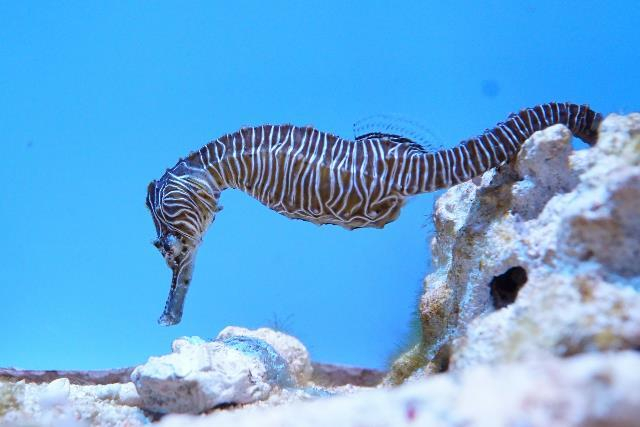
churaumi.okinawa Video by Shallu Agrawal -
In the realm of common animals that start with the letter "Z," the zebu, scientifically known as Bos primigenius indicus, emerges as a unique and resilient species of cattle with a rich cultural history and widespread distribution in various parts of the world. Also referred to as humped cattle, zebus are distinct from their non-humped counterparts, such as European cattle, due to the presence of a prominent hump on their shoulders.
Originating from South Asia, zebus have played an integral role in the agrarian societies of India and surrounding regions for centuries. Their adaptation to diverse climates, including hot and humid environments, has contributed to their prevalence in tropical countries. Zebus have also been introduced to other continents, including Africa, South America, and parts of North America, where they continue to thrive in various agricultural settings.
The most notable physical characteristic of the zebu is the hump on its shoulders, which consists of a fatty deposit supported by the vertebrae. This hump serves as an adaptive feature, providing a reservoir of energy during periods of scarcity and aiding in thermoregulation in hot climates. Their unique hump is complemented by a dewlap, a loose fold of skin under the neck, which further assists in heat dissipation.
Zebus come in a variety of colors, including shades of gray, brown, and white. Their compact and sturdy build, along with a distinctive hump, sets them apart from other cattle breeds. Additionally, zebus often possess long, upward-curving horns that add to their distinctive appearance.
Beyond their physical characteristics, zebus hold cultural and economic significance in many societies. They are revered in Hinduism, with the Brahman breed, a specific type of zebu, considered sacred. Zebus are utilized in agriculture for various purposes, including plowing fields, providing milk and meat, and serving as symbols of wealth and prosperity in certain cultural traditions.
Zebus are well-suited to harsh and challenging environments, displaying resilience in the face of limited resources. Their ability to thrive in hot climates and withstand periods of drought makes them valuable assets in regions where other cattle breeds might struggle.
In addition to their role in agriculture, zebus are also part of cultural festivities, religious ceremonies, and traditional practices in many communities. Their symbolism extends beyond the practical aspects of farming to embody qualities such as strength, endurance, and sacredness.

pexels.com Video by The Dodo -
The Zapata Rail is a small bird, measuring around 9 to 10 inches (23 to 25 centimeters) in length. Its plumage is characterized by a combination of striking colors, including rich chestnut-brown on the back, wings, and tail, contrasting with a deep blue on its face and throat. The underparts are generally gray, contributing to the overall intricate pattern of its feathers. Its long, slender bill and well-adapted toes indicate its specialized foraging habits in wetland environments.
What sets the Zapata Rail apart is not only its distinctive appearance but also its elusive nature. This bird is known for its secretive behavior, often staying concealed in the dense vegetation of its marshy habitats. Its shyness and preference for well-hidden spots make it a challenging bird to observe and study, adding an air of intrigue to its existence.
The Zapata Swamp, a UNESCO Biosphere Reserve and Ramsar Wetland of International Importance, provides a crucial habitat for the Zapata Rail. This unique ecosystem, characterized by mangroves, swamps, and freshwater marshes, offers an ideal setting for the rail's foraging and nesting activities. Despite the apparent suitability of its habitat, the Zapata Rail faces various threats, including habitat degradation, invasive species, and the potential impact of climate change on its wetland environments.
Conservation efforts for the Zapata Rail are challenging due to its elusive nature and the limited knowledge about its population size and distribution. Researchers and conservationists employ techniques such as passive acoustic monitoring and camera traps to gather information about this elusive bird without causing disturbance to its natural behavior.
The Zapata Rail's conservation status is currently listed as "Near Threatened" on the International Union for Conservation of Nature (IUCN) Red List. Efforts are underway to better understand its ecology, address habitat threats, and implement conservation strategies to ensure the survival of this unique rail.
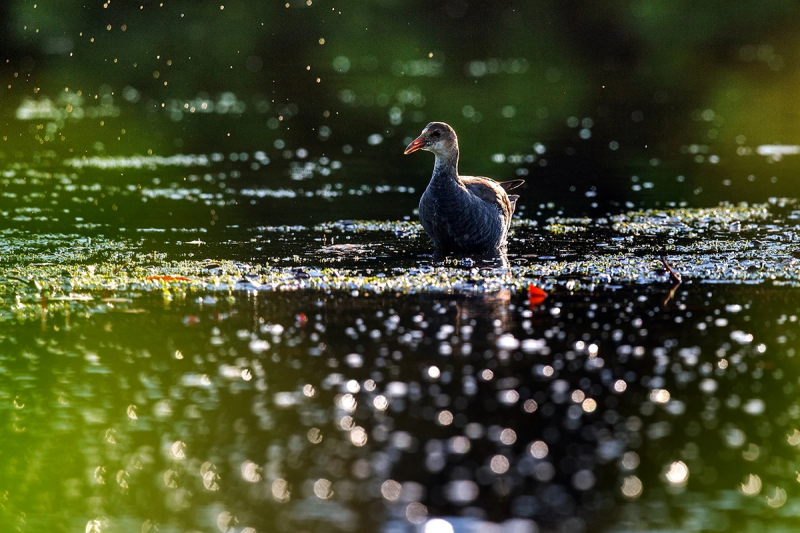
edgeofexistence.org Video by Planet Doc Full Documentaries -
Among common animals commencing with the letter "Z," the zokor stands out as a subterranean marvel, creating an extensive and complex network of tunnels beneath the ground. Scientifically named Myospalax, the zokor is a rodent with a crucial ecological role in the grasslands and steppes of Central Asia, where it frequently engages in burrowing and foraging activities beneath the surface.
The zokor's appearance is adapted for its subterranean lifestyle. Measuring around 6 to 14 inches (15 to 36 centimeters) in length, excluding its short tail, and weighing up to 2 kilograms, the zokor has a stout body, well-suited for digging, with strong forelimbs equipped with robust claws. Its fur varies in color, typically matching the soil of its habitat, and it possesses tiny eyes and ears, indicative of its primarily subterranean existence.
One of the most remarkable aspects of the zokor's behavior is its burrowing expertise. The zokor constructs an elaborate system of tunnels that can extend for considerable distances beneath the ground. These tunnels serve multiple purposes, providing shelter from predators, maintaining a stable temperature, and offering pathways for foraging.
Zokors are herbivores, feeding on the roots, bulbs, and tubers they encounter while burrowing. Their subterranean lifestyle allows them to access the underground parts of plants, and their incisors are well-adapted for gnawing through plant material. While their diet mainly consists of plant matter, they are known to consume insects occasionally.
Despite their solitary nature, zokors are known for their territorial behavior, with each individual occupying and defending its burrow system. These territorial boundaries are marked using scent glands, and encounters between zokors can result in aggressive interactions.
The zokor's presence in its native ecosystems has both ecological and agricultural implications. On one hand, their burrowing activities can aerate the soil and facilitate nutrient cycling, contributing to the overall health of grassland ecosystems. On the other hand, zokors can be considered agricultural pests due to their foraging habits, which can lead to damage to crops and vegetation.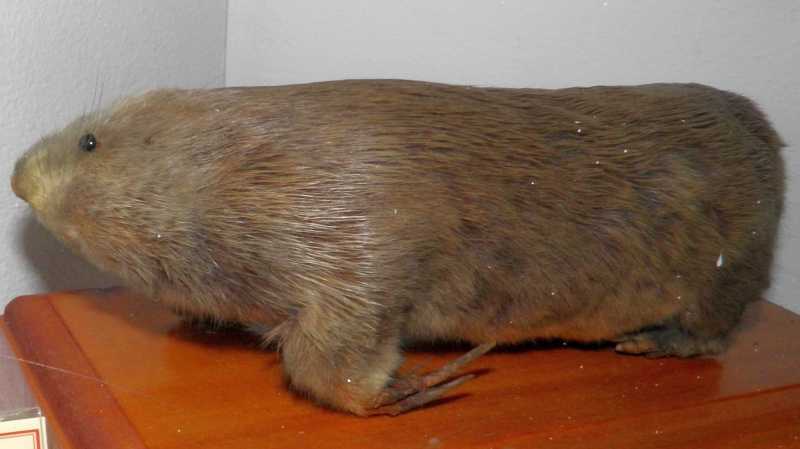
a-z-animals.com Video by Animal a Day -
The zorilla, also known as the striped polecat, is a fascinating and enigmatic creature that inhabits the African continent. This small mammal belongs to the Mustelidae family, which also includes weasels, otters, and badgers. Despite its name, the zorilla is not closely related to the true polecats. Let's delve into the remarkable characteristics and behaviors that define this elusive species.
The zorilla is best known for its striking appearance, characterized by a distinct black and white striped pattern that closely resembles that of a skunk. This unique coloration serves as a warning to potential predators, signaling the zorilla's ability to emit a noxious odor as a defense mechanism. With a long, bushy tail and short, powerful legs, the zorilla possesses a compact and agile build that aids in its movements through various habitats, including grasslands, savannas, and open woodlands.
Primarily nocturnal and solitary, the zorilla is a proficient digger, using its sharp claws to excavate dens in the ground where it seeks refuge during the day. Known for its scavenging habits, the zorilla feeds on a diverse diet that includes insects, small vertebrates, fruits, and carrion. Its keen sense of smell and sharp eyesight contribute to its success as a predator and scavenger in its ecosystem.
One of the most intriguing attributes of the zorilla is its potent defense mechanism. When threatened, the zorilla can discharge a foul-smelling secretion from its anal glands, which closely resembles the defensive mechanism of skunks. This noxious odor serves as an effective deterrent against potential predators, allowing the zorilla to evade danger and protect itself from harm.
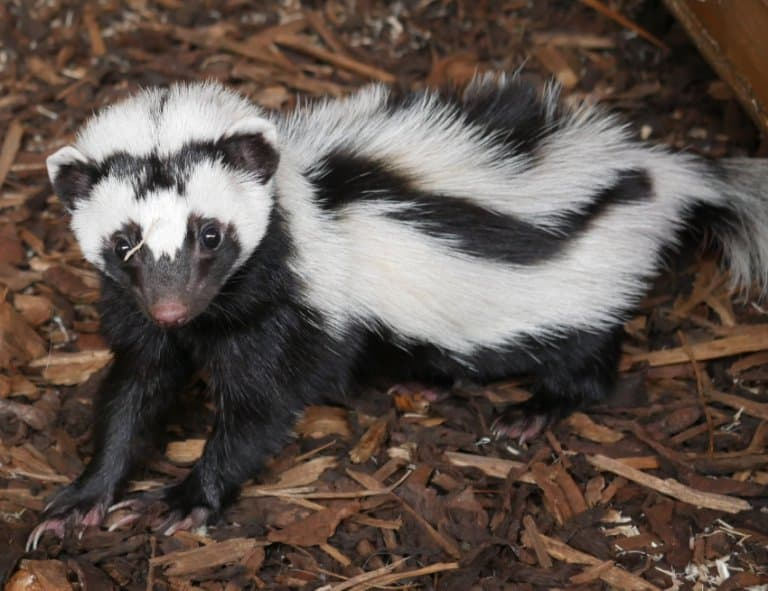
factanimal.com Video by TheOriginalEnZOOsiast -
The Zebra Pleco (Hypancistrus zebra), known for its distinctive black and white striped pattern, is a captivating freshwater aquarium fish that has become highly sought after by aquarium enthusiasts. Native to Brazil's Xingu River, this unique species has gained popularity not only for its striking appearance but also for its relatively peaceful nature and manageable size, making it a favorite among aquarists.
The Zebra Pleco showcases a bold and eye-catching coloration, characterized by its alternating black and white vertical stripes covering its body. The contrast of these colors creates a visually striking appearance, earning it the name "Zebra." This species exhibits a flattened body shape with a high dorsal fin, and it generally reaches a size of around 3 to 4 inches in captivity.
In the wild, Zebra Plecos are native to the fast-flowing, rocky bottoms of the Xingu River in Brazil. The river's clear, oxygen-rich waters create an ideal environment for these fish, characterized by strong currents, rocky shelters, and submerged structures. In aquariums, mimicking these conditions, such as providing hiding spots and maintaining clean water with good oxygenation, is crucial for their well-being.
Zebra Plecos are primarily carnivorous, with a diet consisting of small invertebrates, insect larvae, and other protein-rich foods. In aquariums, they can be fed a balanced diet that includes high-quality pellets, live or frozen foods like brine shrimp or bloodworms, and occasional treats like vegetable matter.
Creating an optimal environment for Zebra Plecos in captivity involves replicating their natural habitat. This includes a well-filtered aquarium with strong water movement, rocky caves or shelters for hiding, and smooth substrates to prevent injury to their sensitive underbelly. Maintaining stable water parameters, such as a slightly acidic to neutral pH and warmer temperatures, is essential for their health.
Zebra Plecos are known for their complex breeding behaviors. In captivity, successful breeding often requires meticulous attention to water quality, temperature, and the provision of suitable breeding caves. The male guards the eggs, ensuring proper aeration, while the female remains protective of the territory. Successful breeding programs have contributed to the availability of Zebra Plecos in the aquarium trade.
The Zebra Pleco has gained immense popularity in the aquarium hobby due to its striking appearance and relatively manageable size. However, their appeal is accompanied by the challenge of meeting their specific care requirements. Responsible aquarists prioritize understanding and providing for the Zebra Pleco's needs to ensure their well-being in captivity.
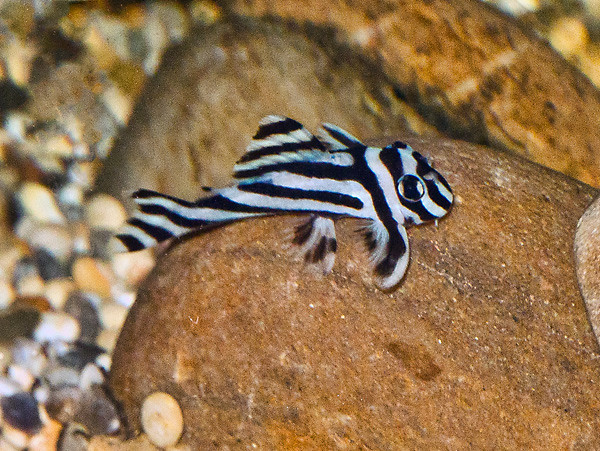
flickr.com Video by Fish Shop Matt -
The Zebra Bullhead Shark, an enigmatic creature dwelling in the depths of the unexplored oceanic realms, captures the imagination with its mesmerizing appearance and mysterious behaviors. With striking zebra-like patterns adorning its sleek body, this aquatic marvel is a testament to the wonders concealed beneath the waves.
Found in the dark abyss where sunlight barely penetrates, the Zebra Bullhead Shark has evolved unique adaptations to thrive in the harsh conditions of the deep sea. Its mesmerizing stripes are not just for aesthetic appeal but serve a functional purpose in camouflaging the shark amidst the play of shadows and bioluminescent organisms that populate its habitat.
Measuring about four feet in length, this elusive species exhibits a distinct bullhead shape, characterized by a broad, flattened snout. The Zebra Bullhead Shark's sensory organs are finely tuned to detect the faintest vibrations and electrical signals, enabling it to navigate the inky blackness and locate prey with remarkable precision.
Unlike its shallow-water relatives, the Zebra Bullhead Shark has developed phosphorescent patches along its body, emitting a soft glow that not only aids in communication but also lures small organisms toward its waiting jaws. The symbiotic relationship with bioluminescent bacteria on its skin creates an otherworldly spectacle in the depths.
Researchers have postulated that the Zebra Bullhead Shark exhibits complex social behaviors, forming tight-knit communities in the abyssal plains. These communities engage in synchronized swimming patterns and communicate through a series of subtle electrical signals, creating a ballet of light and movement in the ocean's depths.
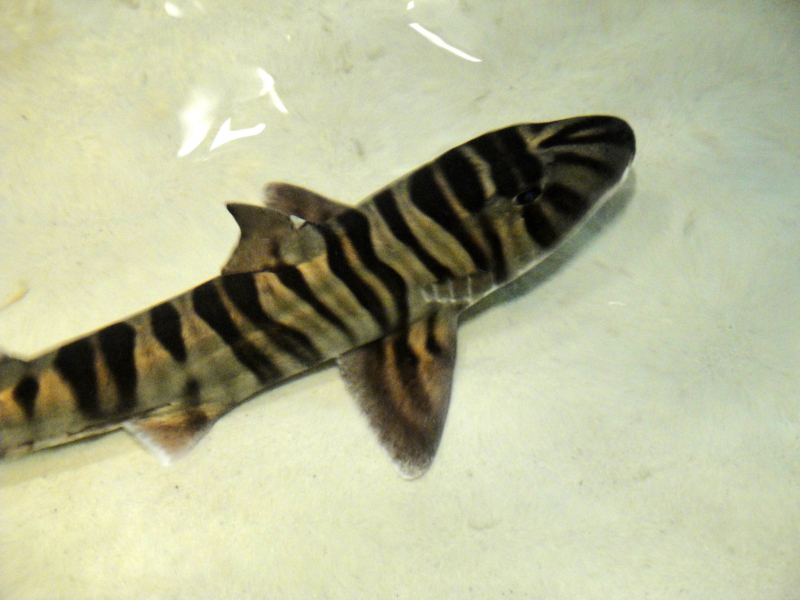
flickr.com Video by Discovery Place Science -
When it comes to an animal that starts with the letter "Z," the Zone-tailed Hawk (Buteo albonotatus) cannot go off the list. This hawk, native to the Americas, particularly the southwestern United States down to South America, is distinguished by its striking plumage and a hunting strategy that mimics that of vultures, adding an element of surprise to its presence in diverse ecosystems.
The Zone-tailed Hawk exhibits a remarkable resemblance to vultures, especially from a distance, owing to its predominantly black plumage and a wedge-shaped tail. This uncanny mimicry serves as an effective means of surprising its prey. When soaring high in the sky alongside actual vultures, the hawk adopts the appearance of a scavenger, allowing it to approach its quarry, including small mammals and birds, without arousing suspicion.
Measuring around 18 to 22 inches (46 to 56 centimeters) in length, the Zone-tailed Hawk possesses a wingspan of about 46 to 54 inches (117 to 137 centimeters). Its wings are broad and rounded, providing excellent maneuverability during flight, while its hooked beak and sharp talons are formidable tools for capturing and dispatching prey.
Despite its close resemblance to vultures, the Zone-tailed Hawk is a bird of prey belonging to the Buteo genus. Its mimicry is a textbook example of Batesian mimicry, a form of mimicry in which a harmless species evolves to resemble a harmful or dangerous one.
Unlike many other hawks, the Zone-tailed Hawk displays a notable preference for soaring and gliding during its hunting expeditions. This behavior, combined with its vulture-like appearance, allows it to get closer to its prey without triggering the alarm responses often provoked by the presence of typical raptors.
While these hawks do not display sexual dimorphism in their plumage, the juveniles sport a distinct look with a mottled brown-and-white pattern. As they mature, they gradually acquire the adult's darker plumage.
The Zone-tailed Hawk typically resides in a variety of habitats, ranging from arid deserts to dense forests. It is often found near rivers and canyons, where its hunting strategy can be most effective. During the breeding season, which typically occurs from April to August, they construct nests in high locations such as cliffs or trees.
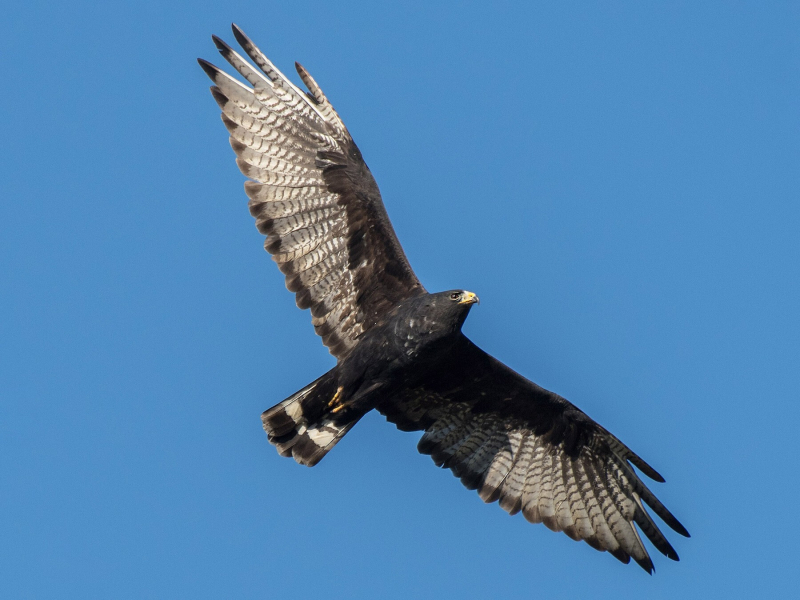
ebird.org Video by Liberty Wildlife Education -
In the fascinating world of common animals that start with the letter "Z," the Zigzag Heron (Zebrilus undulatus) emerges as a captivating avian species known for its distinctive appearance and elusive nature. This small heron, native to the dense and swampy regions of northern South America, is a master of camouflage and a testament to the diversity of wildlife inhabiting our planet.
The Zigzag Heron derives its name from the striking zigzag pattern on its neck and back, which resembles the intricate markings on a zebra. This unique plumage, coupled with its relatively small size, allows the heron to blend seamlessly into the intricate vegetation of its preferred habitats, making it a challenging bird to spot in the wild.
Measuring around 13 to 15 inches (33 to 38 centimeters) in length, the Zigzag Heron boasts a cryptic coloration of brown, black, and white, further enhancing its ability to hide among the shadows of the swamps and marshes it calls home. Its slender and elongated neck, well-suited for striking and catching prey, contributes to its overall elegant yet inconspicuous appearance.
Unlike many heron species that are known for their long-legged wading behavior, the Zigzag Heron has a distinctive foraging style. It often remains motionless, waiting patiently for its prey, which includes small fish, amphibians, and insects, to come within striking distance. When the moment is right, the heron uses its sharp beak to swiftly snatch its unsuspecting prey.
The Zigzag Heron is primarily crepuscular, meaning it is most active during the dawn and dusk hours. This behavior aligns with the feeding patterns of its prey and allows the heron to capitalize on the low light conditions for both hunting and evading potential predators. During the day, it roosts in the dense vegetation, further emphasizing its preference for concealed living.
Birdwatchers and nature enthusiasts often consider spotting a Zigzag Heron a rare and rewarding experience. The species' elusive nature, coupled with its intricate plumage, adds to its allure and makes it a sought-after subject for birdwatching enthusiasts exploring the remote wetlands of northern South America.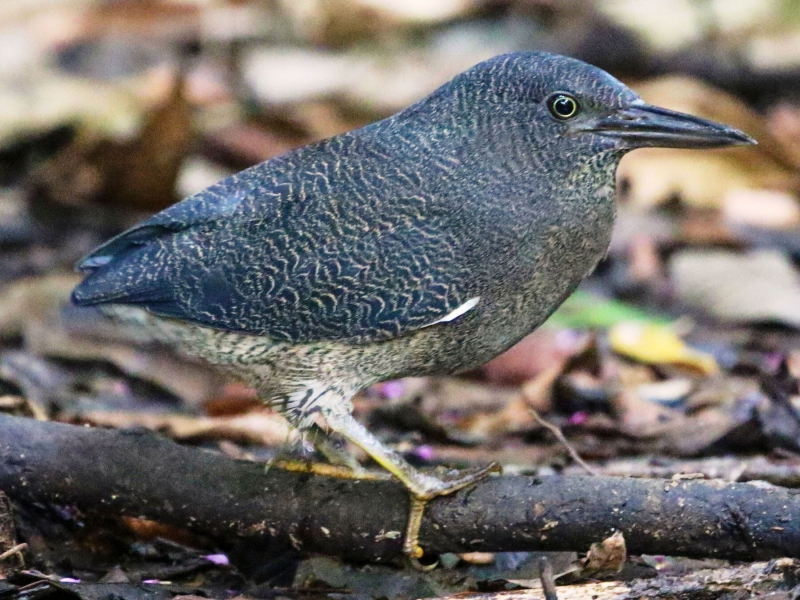
ebird.org Video by Pantanal BirdClub -
The Zuchon, a delightful and affectionate canine companion, is a breed that contributes to the roster of common animals starting with the letter "Z." Also known as the Shichon, this breed is a cross between a Shih Tzu and a Bichon Frise, resulting in a charming and loving small dog that has gained popularity among pet enthusiasts.
Known for their friendly and sociable nature, Zuchons make excellent family pets. They tend to be affectionate, eager to please, and enjoy being around people. This makes them well-suited for various living environments, including apartments and houses with families or individuals.
One of the distinctive features of the Zuchon is its appearance, which often combines traits from both parent breeds. They typically have a soft, curly coat that can come in various colors, such as white, black, brown, or a mix of these. The coat is hypoallergenic, making Zuchons a favorable choice for individuals with allergies.
Zuchons are known for their adaptability, thriving in different living conditions. Their small size makes them suitable for apartment living, but they also enjoy outdoor activities. Regular walks and playtime contribute to their overall well-being, and their playful nature makes them enjoyable companions for families with children.
These dogs are not only characterized by their physical attributes but also by their intelligence. Zuchons are quick learners, making training sessions relatively straightforward. Positive reinforcement techniques are particularly effective, as they respond well to praise and treats.
While Zuchons are generally robust and healthy, like any breed, they may be prone to certain health issues, including dental problems and ear infections. Regular veterinary check-ups, a balanced diet, and proper grooming contribute to their overall health and well-being.
In terms of lifespan, Zuchons can live around 12 to 15 years, providing ample time for lasting companionship. Their friendly disposition and adaptability make them well-suited for various households, from families with children to individuals seeking a devoted and affectionate furry friend.

purina.co.uk Video by Rossbane Kennels

















